Plant a Bee Friendly Garden
Plant a Bee Friendly Garden. Easy to do and great for all pollinators.
We all have heard of the decline in the bee population. So what can you do to help out?
Plant a Bee-Friendly Garden, of course. You can contribute to the bee population even if you live in a concrete urban jungle. Any kind of flower garden can be Bee friendly if you plant the best flower types for bees, even a small container garden on your porch, deck, or patio. Here is a quick checklist of what is best for a bee-friendly garden.
- Stop using chemicals, pesticides, insecticides and herbicides in your garden.
- Choose the best plants for bees. (some of the best plants you can choose are natives to your area)
- Provide a Water Source
- Provide shelter
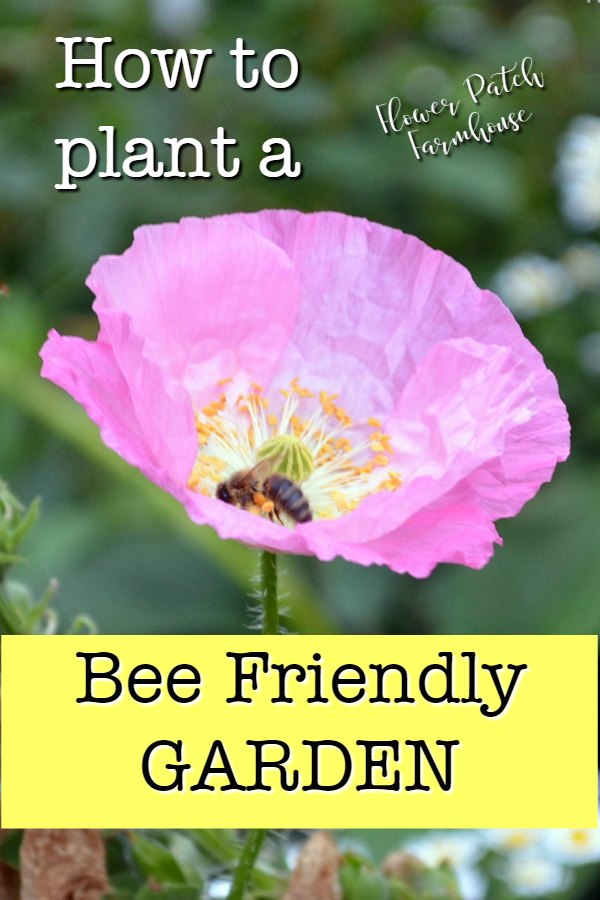
This post contains affiliate links. If you make a purchase after clicking a link I may make a small commission at no added cost to you.
How to make your garden more bee friendly
Bees are attracted to your garden for the nectar and pollen but they also come in contact with any chemicals or broad-spectrum pesticides you may have sprayed or used in your garden. Low doses of insecticides can inhibit their navigation skills causing the bees to lose their way back to the nest.
If the bee does make it back the pesticide is brought back to the nest, it will be transferred to nestmates directly and/or incorporated into the honey, where it can affect the development of larvae into workers and queens, and thus affect future generations of the colony. (studies have found a large percentage of honey is contaminated with pesticides, up to 70% in some states)
Even so-called natural or organic homemade pesticides are dangerous to the bees. You know what I am talking about, you see them posted all over Pinterest, all-natural, organic sprays supposedly safe. Here is a great article showing how they really can be a danger to bees as well. Organic Pesticides Still Kill Bees
Related: Pinterest Gardening Myths that are dangerous for your garden!
The best way to keep your garden bee-friendly is to use what is called integrated pest management. That is an entire blog post in of itself but it basically boils down to attracting beneficial insects to your garden to help minimize the effect of the harmful ones.
A fantastic book I have that gives you so many ways to plant for the health of your garden and pollinators are called Plant Partners: Science-Based Companion Planting Strategies for the Vegetable Garden. It is filled with information on what plants to integrate for pest and disease management without any chemicals. This book has been invaluable to me for the past couple of years!
Best plants for bees
Native plants and the less hybridized flowers tend to produce more nectar and pollen than their ultra-hybridized cousins. Even some plants many call weeds are some of the best.
Early garden flowers/plants include Dandelion. I have a large patch of dandelions I let grow every year. Usually, I let them grow to harvest and then feed to my chickens.
Dandelion is a very nutritious plant for people and chickens. Some say that the Dandelion nectar is not the best for bees and that it detracts them from going to fruit trees.
Let me ask, do you think a bee is going to go for subpar nectar when the good stuff is available? They are smarter than that. And the fruit trees in my area are not in bloom yet so that theory does not fit my garden.
Also, did you know that dandelions, with their very long tap root, pull up nutrients that benefit shallower-rooted plants? Yes, they can be beneficial and in my garden, they are one of the very first things blooming. The bees seem to love them.
So keep in mind to plant for season-long feeding of the bees. The best plants for bees listed below contain early spring as well as late fall bloomers. The longer the blooming season the better.
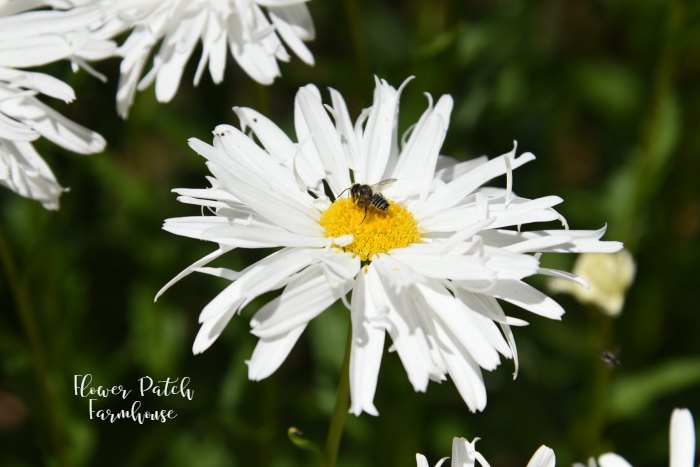
Annuals: Asters, Calliopsis, Clover, Dandelions, Marigolds, Poppies, Sunflowers, Zinnias, Petunias, Cosmos
Perennials Alliums, Buttercups, Clematis, Crocuses, Dahlias, Echinacea, English Ivy, Foxglove, Geraniums, Germander, Globe Thistle, Hollyhocks, Hyacinth, Rock Cress, Sedum, Snowdrops, Sweet Williams, Tansy, Yellow Hyssop,
Garden Plants: Blackberries, Cantaloupe, Cucumbers, Gourds, Peppers, Pumpkins, Raspberries, Squash, Strawberries, Watermelons, Wild Garlic,
Herbs: Bee Balm, Borage, Catnip, Coriander/Cilantro, Fennel, Lavender, Mints, Rosemary, Sage, Thyme,
Shrubs: Blueberry, Butterfly Bush, Button Bush, Honeysuckle, Indigo, Privet, Lilacs, Roses
That is in no way an exhaustive list but it gives you an idea. Single-layer flowers like daisies, single hollyhocks, etc are better than doubles since it is easier for the bees to land and navigate on them. It is said that the singles also produce more pollen as well.
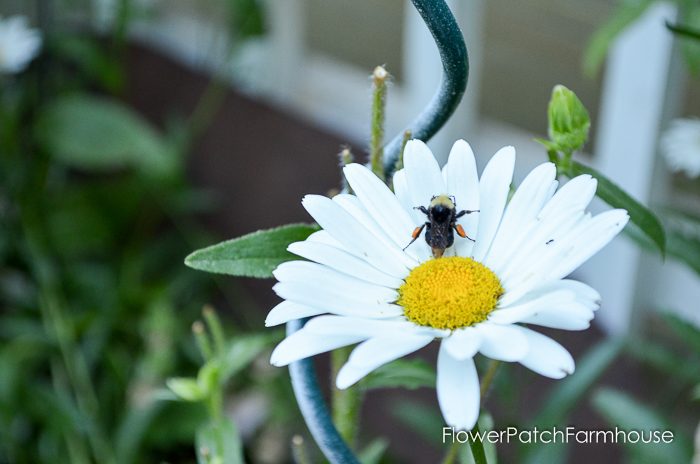
No need to dig up what you have. It is easy enough to add flowers that attract bees to your existing garden. Just plant them between existing flowers or grow them in containers and place them throughout your yard.
The beautiful thing is that many of the best plants for bees can be grown from seed and are readily available. They are also budget-friendly.
start seeds on a budget
Indoor Seed Starting
Start seeds early for a bountiful garden in summer. Get more flowers on a budget!
The Bee Garden – How to attract bees to your garden
Provide a water source
Bees need water as much as nectar. A fountain, birdbath, or ponds work well. I like to use a ceramic dish to create a “bee bath” but any shallow container will do.
To create one yourself fill a shallow container of water with pebbles or twigs for the bees to land on while drinking. Make sure to maintain the Bee Bath, give it a good scrub once a week, and keep filled with freshwater, once they know they can rely on it they will return daily.
I even have many come to my DIY Planter with Solar fountain.
Provide Shelter
Providing shelter for bees in the garden can be as simple as maintaining a garden full of spaces guarded against the elements. Keep in mind that a wide expanse of green grass or concrete does not offer protection from wind, rain, and cold for a foraging bee so you must create it.
You can add little bee hotels or create a pile of sticks for the wood-nesting bees. Some use tree holes created by woodpeckers or other critters. Ground nesting bees just need a piece of bare ground. I live across the street from forestry land and they have plenty of places to nest so I don’t go out of my way to create more.
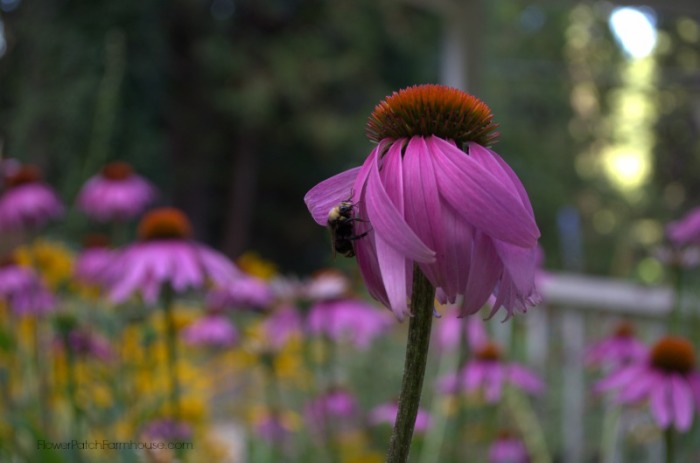
I have practiced being Bee-friendly for years in my garden and the wild bee population around here is excellent. Some days I cannot work among my flowers as there are so many.
They are not aggressive but if I have had trouble with them flying up my pant leg and biting me when they get stuck or somehow in my shirt which ends up being unpleasant for both of us.
So when they are super thick doing their nectar collecting in my garden I just keep out of their way and let them do their thing.
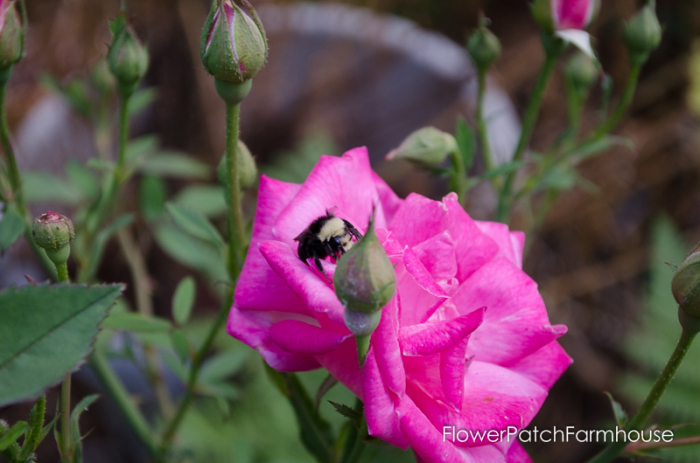
Remember honey bees are only a fraction of the equation, wild or native bees are even more important, and many feed only off native plants. So make more room for natives alongside the highly cultivated and marketed bedding plants.
I hope you add some bee-loving flowers to your garden this season!
Happy Gardening.
more pollinator garden tips
Pollinators are not just Bees
Plant more than for bees. Other critters contribute to pollination. Read for more info on attracting more than bees.
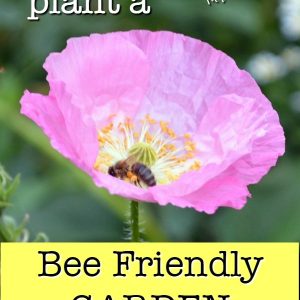
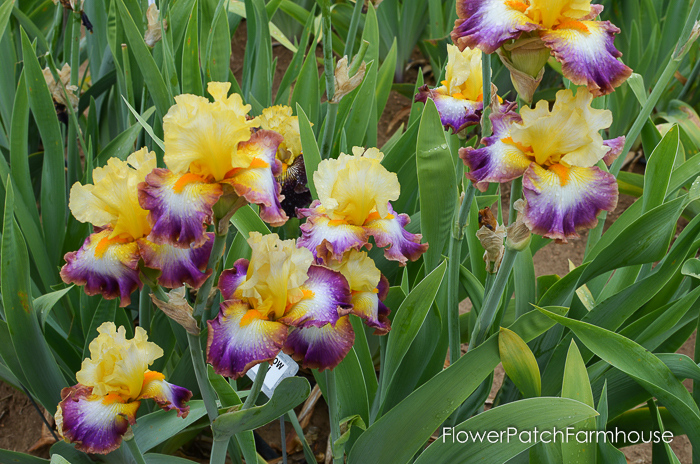
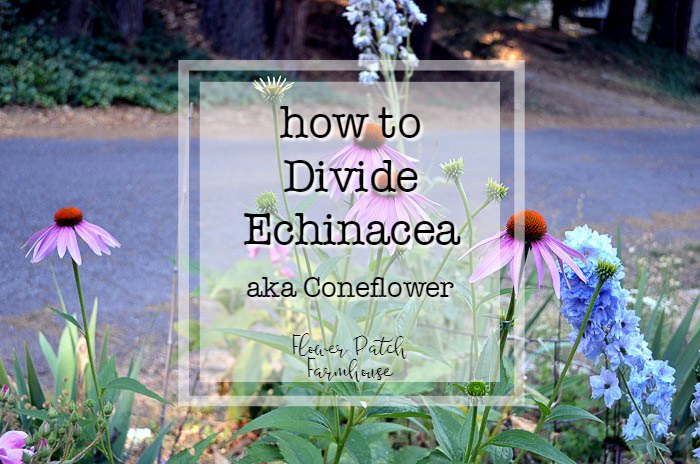
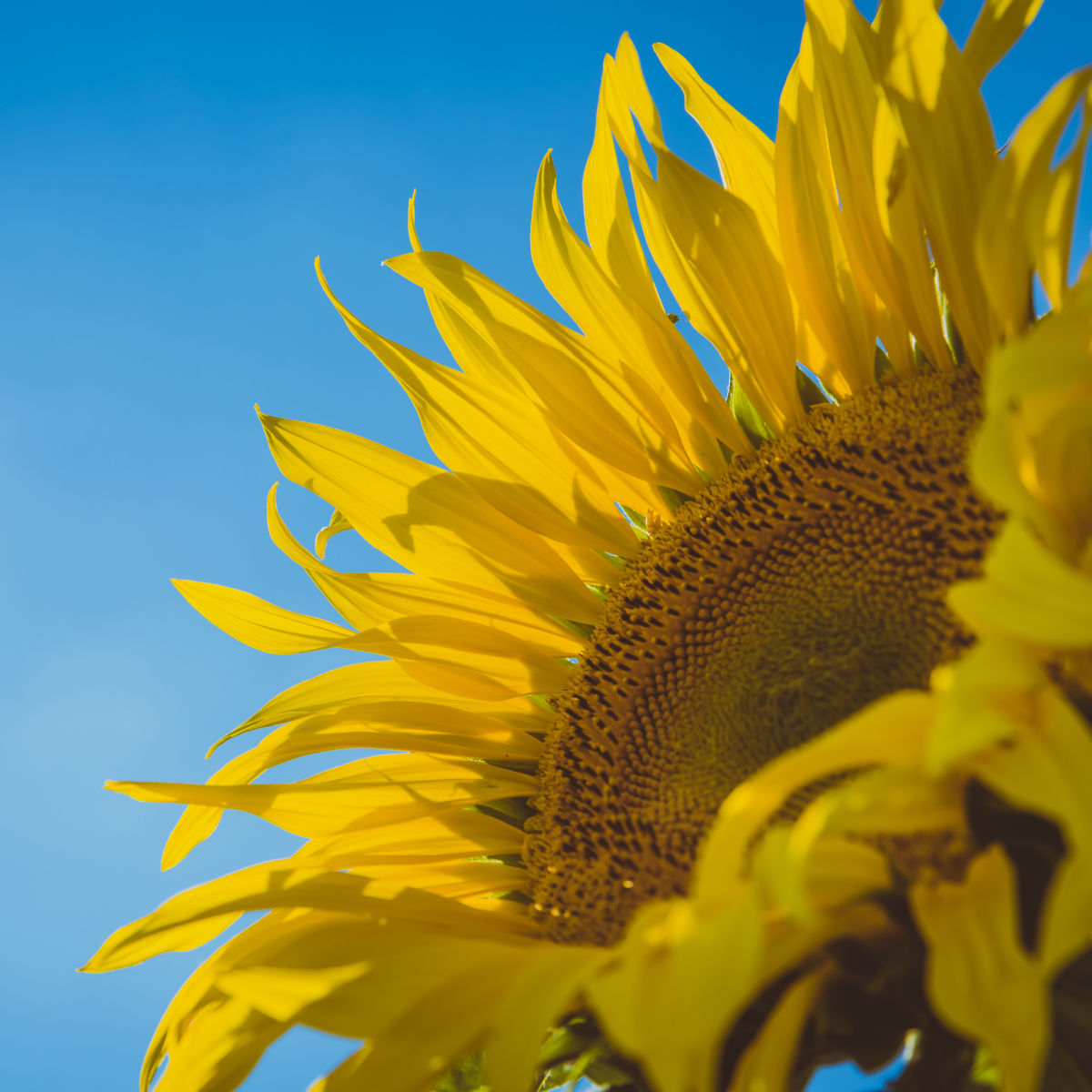
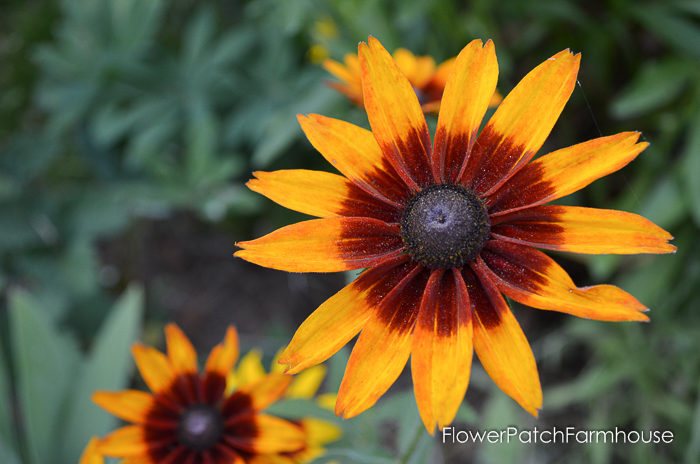
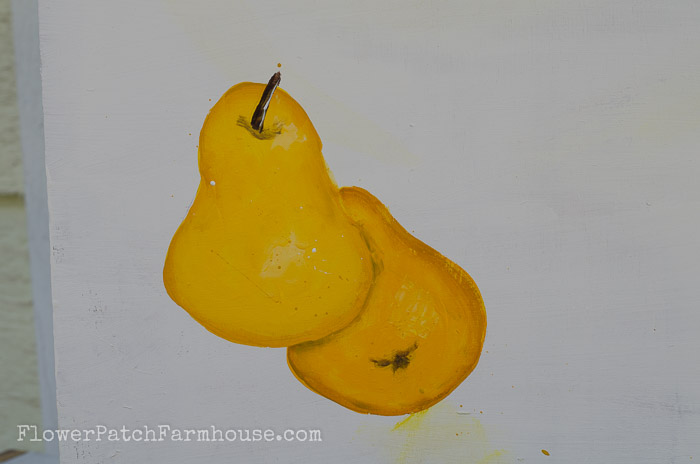
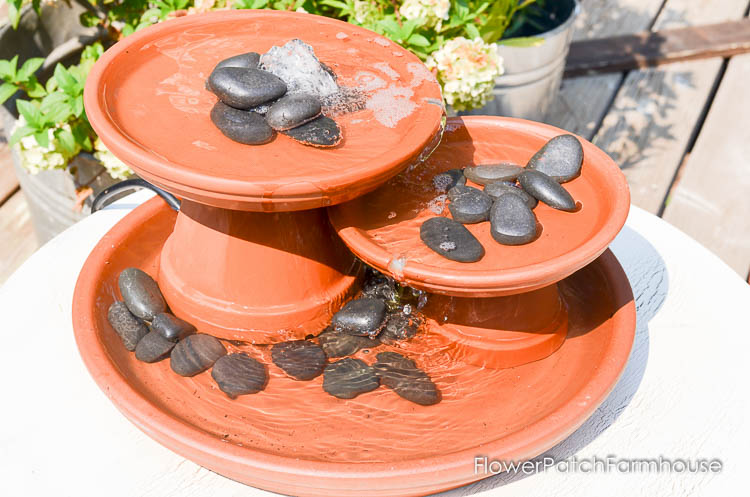
You are welcome. If everybody is aware and does just a little for the bees it can go a long way.
Bees love sunflowers too. I want to plant some this year myself. My neighbor had a huge one last year and I would drive by her house (a block in the wrong direction when going to town) just to see it. 🙂
Good ideas! Thanks!
Great post! I am putting in a vegetable garden and my mom suggested sunflowers to help with attracting bees but I love your ideas with their favorites as well as adding water and shelter for them. I’m not sure I want a hive so following your recommendations will be great for helping those that happen upon my garden. Thanks!